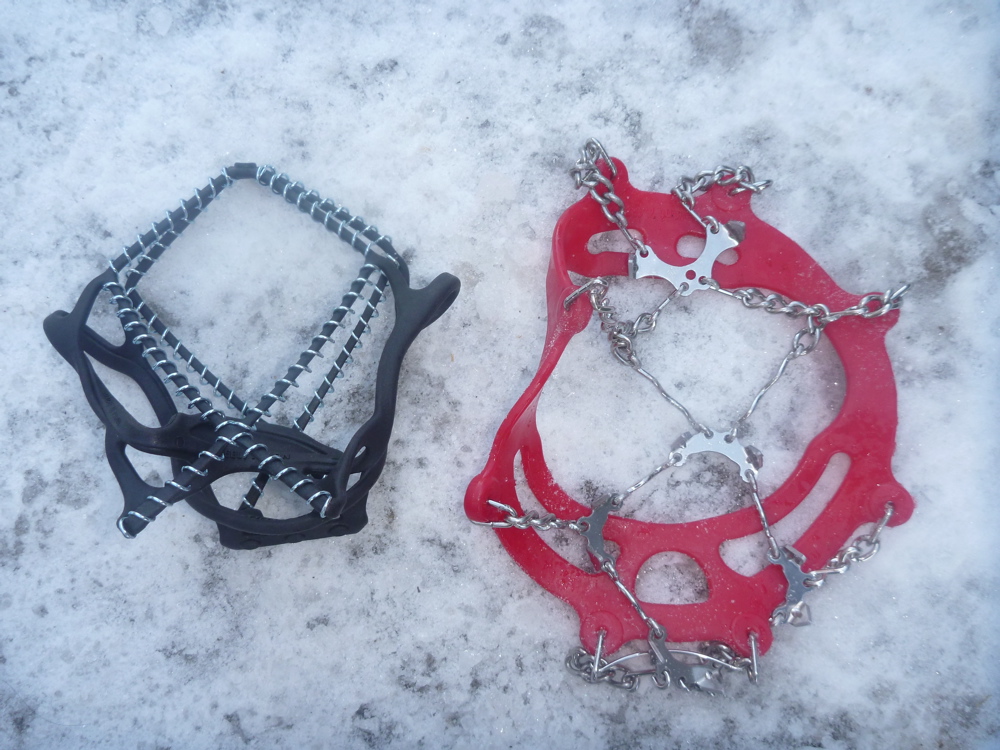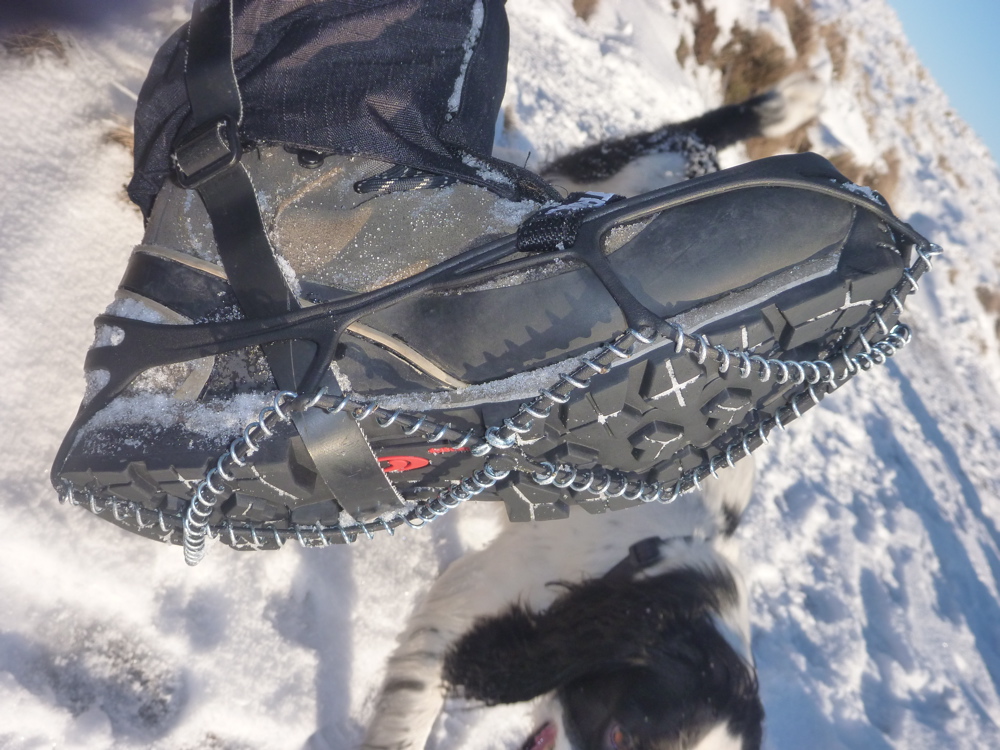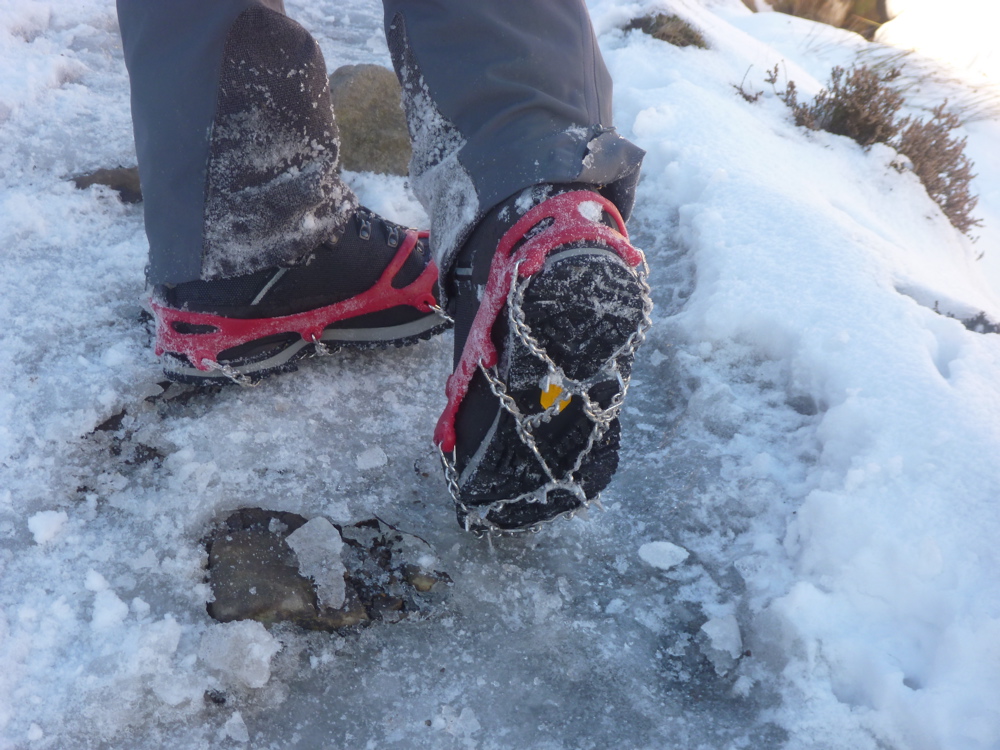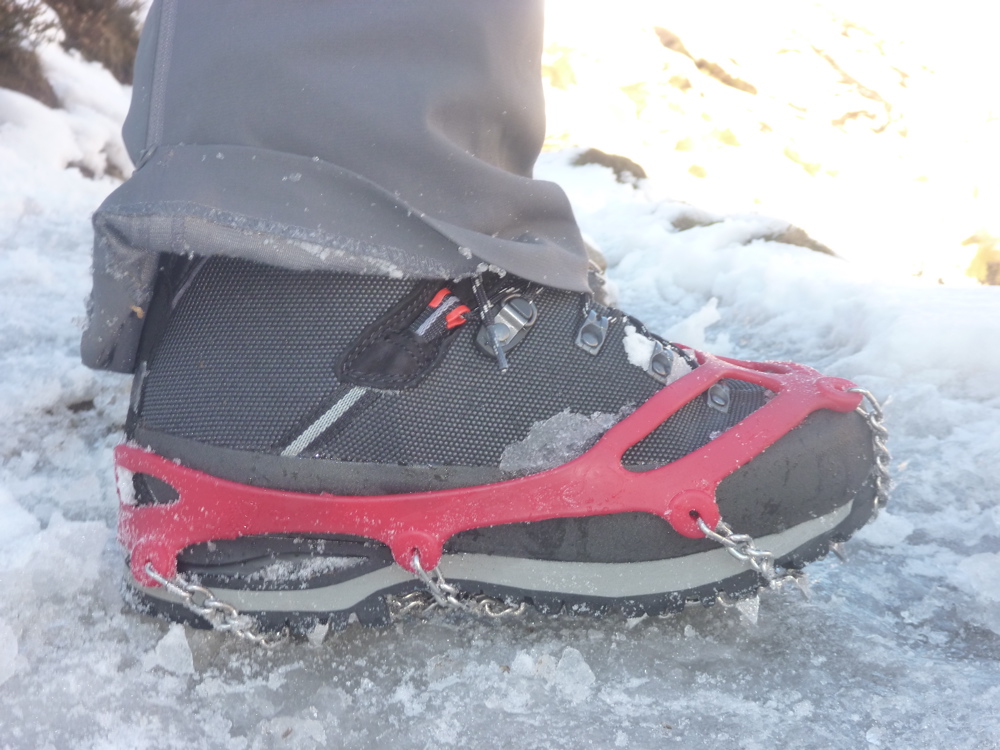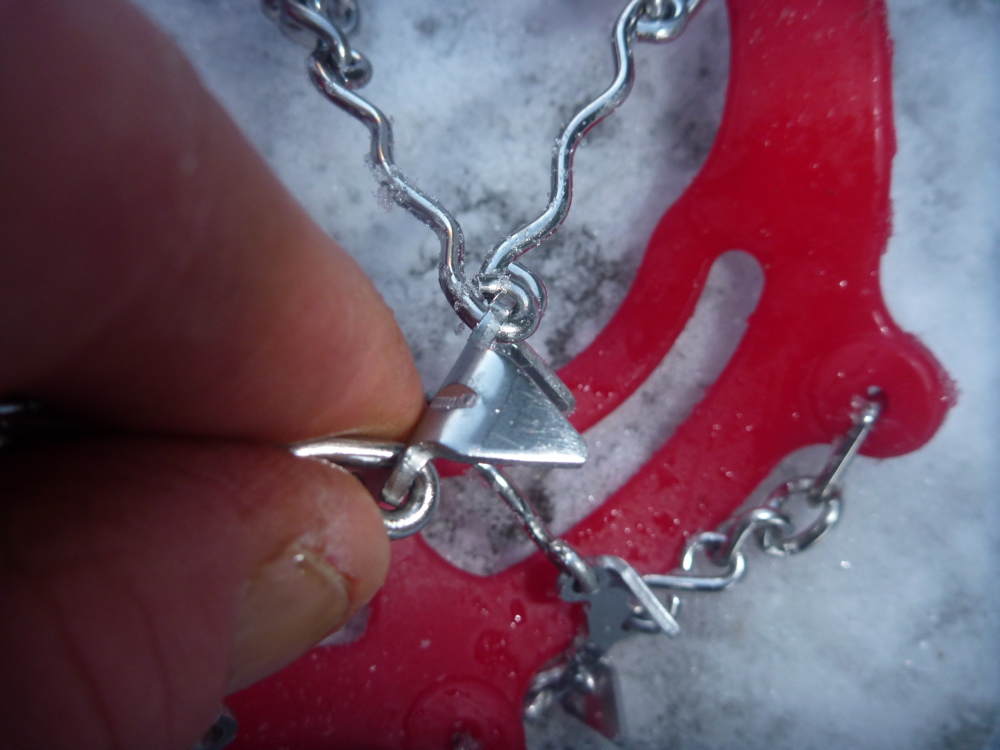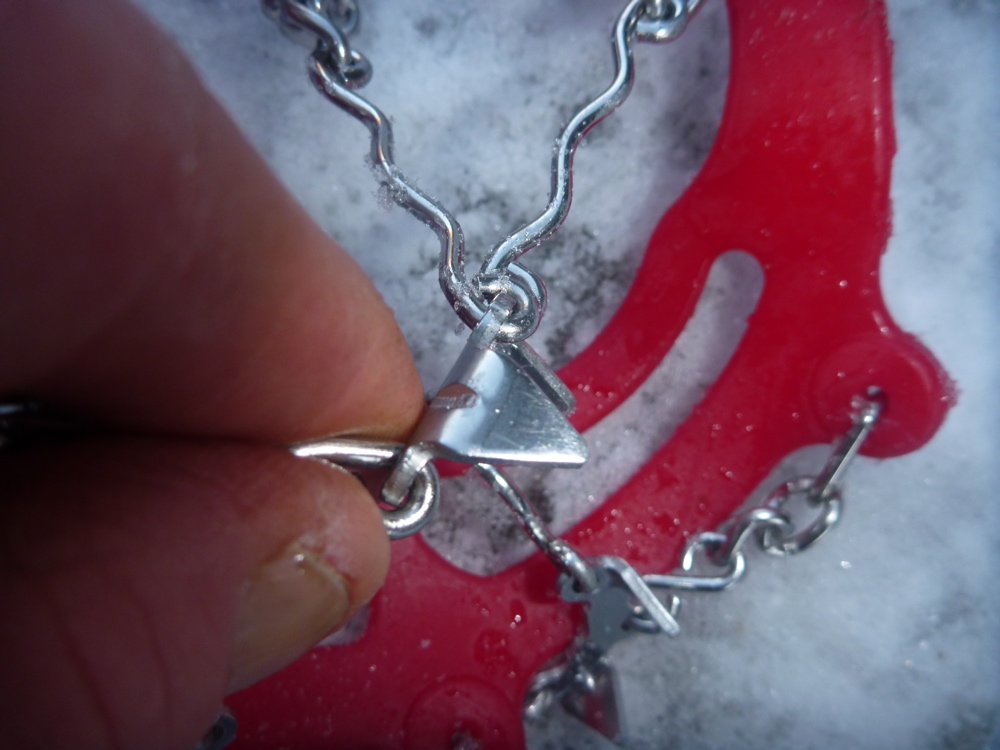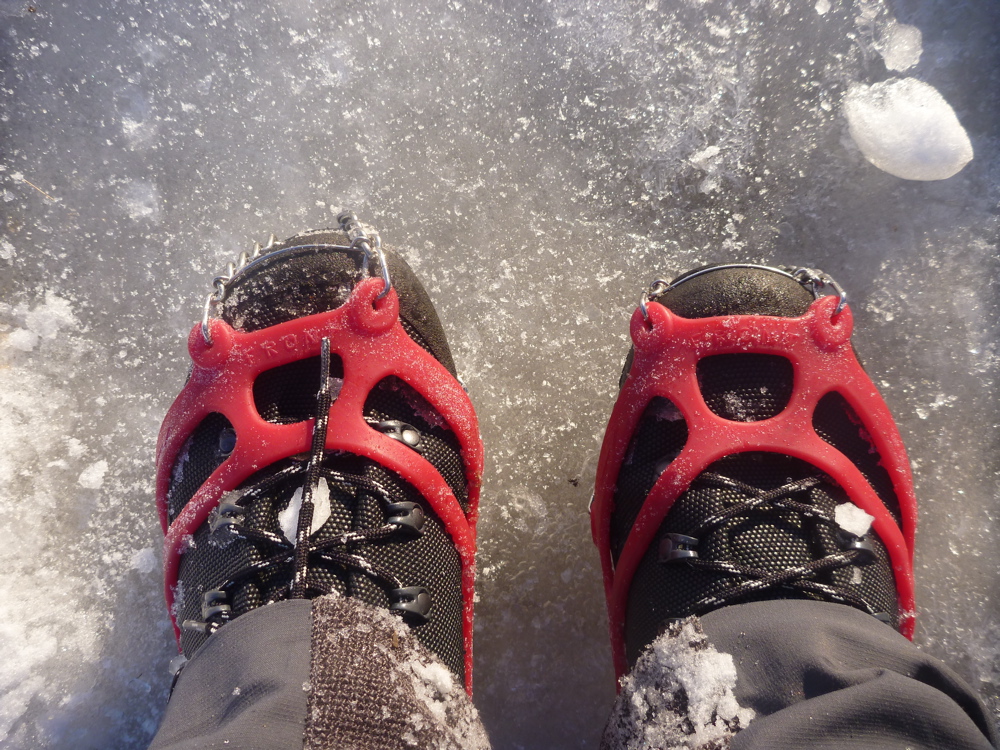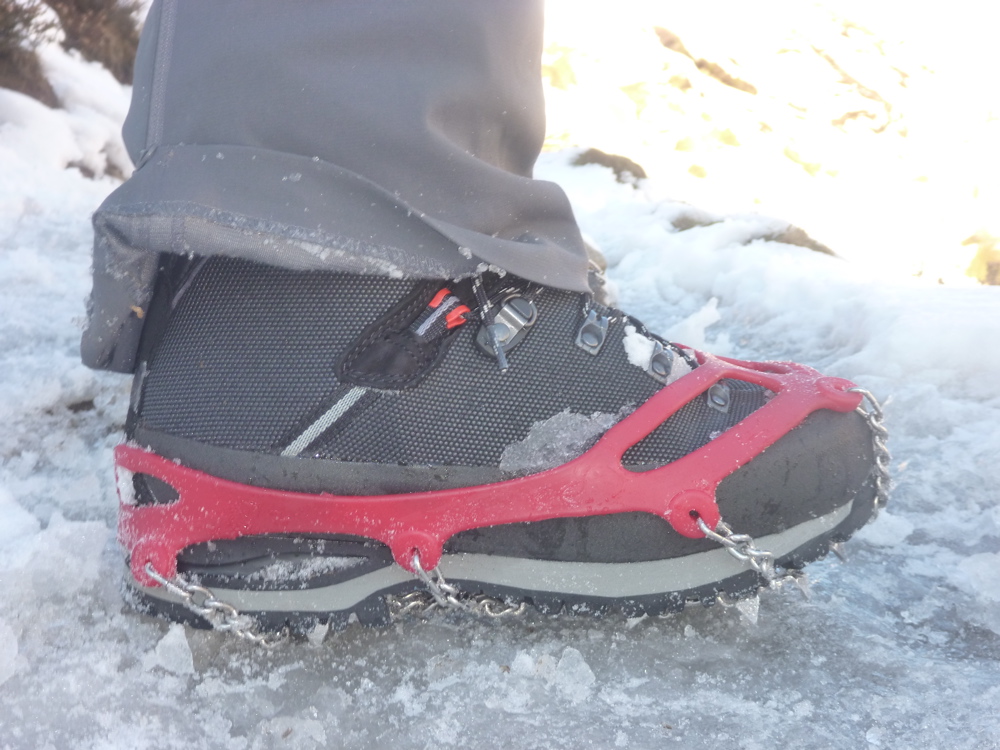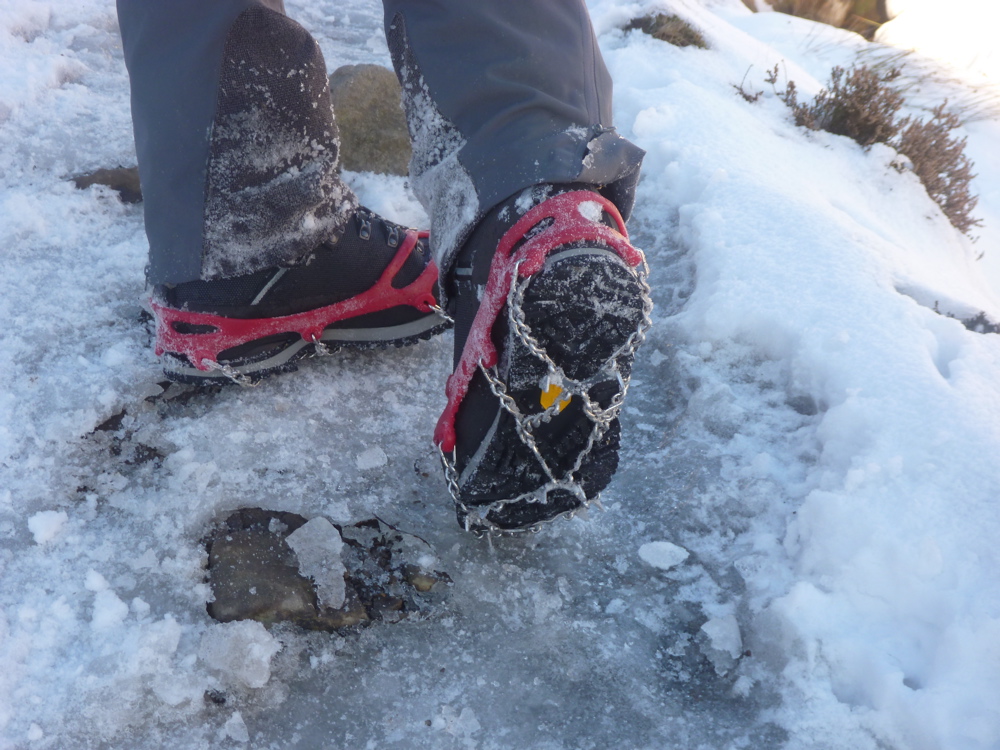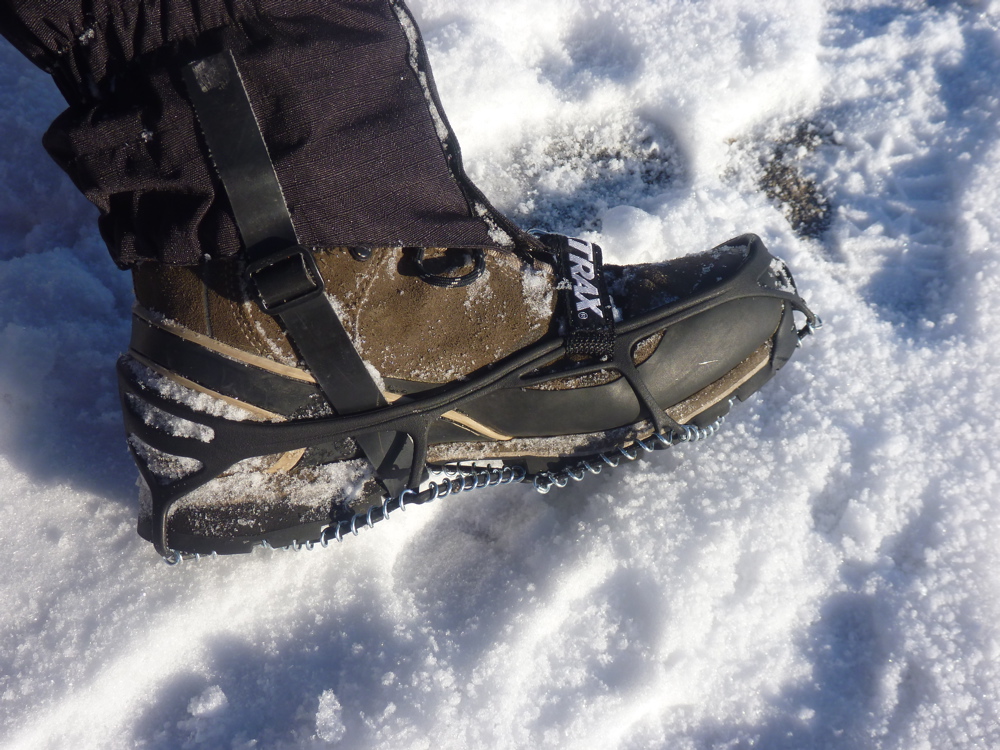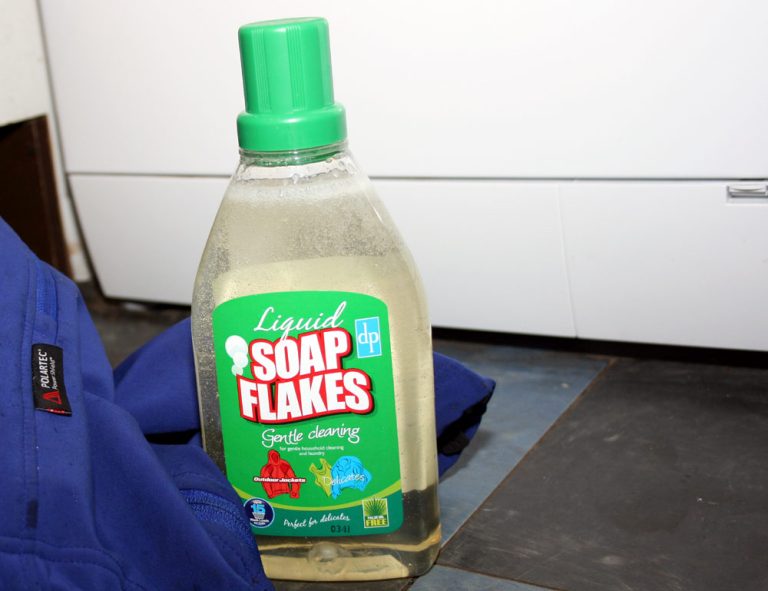In full winter conditions, on steep ground, in the mountains, there isn’t really a substitute for crampons, but what about those odd intermediate days on lower hills, days when your route crosses slippery frozen terrain at an easier angle?
We’ve been using two solutions – Kahtoola Microspikes, chained stainess steel spikes that locate on pretty much any boot or shoe using a stretch urethane harness that sits on the uppers and Yaktrax Pro, which use a similar stretch harness but add grip using 1.4mm steel coils wound around a heavy duty rubber frame which sit on the sole of the boot.
Both add grip but don’t reduce speed in the same way that crampons can, but have subtle pros and cons. Here’s what we made of both of them in real world conditions in a snowy Peak District.
Kahtoola Microspikes – £45
At around 360 grammes per pair, Microspikes are pretty light and also pack down small and neat. Putting them on is super rapid and straightforward, you simply step into the toe section and then pull the heel end of the stretchy urethane harness over your heel. It takes seconds to either put them on or remove them and to avoid any confusion, the front of the harness has ‘Front’ moulded onto it.
Once on, the Kahtoolas feel secure and planted and the way the cradle sits right over the toe and heel keeps them that way. We also like the way that the only parts in contact with the ground are made from steel, the spikes and their linking chains.
In use we found they gave good grip on patches of easy angled ice and on compacted snow making for a really sure-footed feel. On water ice they’re actually easier to use than crampons because the shortness of the spikes makes them far more stable. The same’s true on rocky ground, though they’re still more ‘teetery’ than naked boot soles.
We also like the way you don’t need to adopt a wide-legged crampon walking style to avoid catching points on trousers or gaiters, great if you find yourself in a narrow, well-trodden trench of a path.
They’re not intended for technical ground, but if you can flat foot onto easy angled placements they work really well and add security without slowing you down. As a bonus, like Yaktrax, they also improve your push off on some slightly loose snow due to reduced slippage.
Downsides? They’re less happy on surfaces like rock or tarmac than the Yaktrax even though they give more outright grip. And in some snow conditions, the points won’t be long enough then again, in those conditions, you may not need them anyway. Balling up could potentially be an issue in wet snow, but it’s not happened to us so far.
Yaltrax Pro – £20
The Yaktrax are a lighter beast at around 120g per pair and pack smaller. Like the Kahtoolas, they’re quick to put on or remove, but use an additional strap to increase security. In practice we found the harness wasn’t as secure – the cradle doesn’t come up over the toe to the same extent and a couple of times, in deeper snow, the toe simply got pushed off.
That seems to be less of an issue on thinner snow cover and we found the Yaktrax gave good security on hard snow and also decent traction on ice. In the latter case they weren’t quite as effective as the Microspikes and slipped very slightly where the Kahtoolas simply dug in. They were still much grippier than naked boots though. They also gave subtly improved grip in looser snow, again without impacting on speed as crampons can do.
Where they really scored was on hard, rocky ground and tarmac where you barely knew you were wearing them, whereas the Kahtoolas had a definite ‘mini-crampon’ feel underfoot.
We reckon that makes them arguably a better option for runners who might have to cover a mix of pavement and snowy terrain. We’re also reliably informed that they’re lethal on laminate floor.
One thing we’re not sure about is that the underside of the Yaktrax uses a fair bit of heavy duty rubber and we’re not sure how this will wear in the long term, particularly if used, say, on mixed snow and scree.
Overall
We were actually really impressed with both these options for lower angled snow and ice. The Microspikes give better overall, almost crampon-like grip, but they’re heavier and more expensive plus less stable feeling on rocky sections. We wouldn’t use them on pavements, but they’re so easy to take on and off that this may not be a big issue for many. Finally, the stretchy harness gave a really secure fit that should cope with most footwear as long as you have the correct size.
The Yaktrax – note that the brand also has an XTR Extreme model which is similar in concept to Microspikes, but with spikes based around an ‘anti-snow pack plate’ – is lighter and cheaper.
Grip on hard-packed snow and ice isn’t quite as tenacious as the Microspikes, but its still good and we also like the generally enhanced ‘push off’ grip in snow. Their low profile scores points on rock where there’s less of a cramponesque feel and on tarmac, where you barely notice their prescence. One improvement we’d make would be to extend the cradle to improve security on the boot.
Both decent solutions and well worth carrying when you consider that in winter conditions, ice can form at any angle or altitude.

